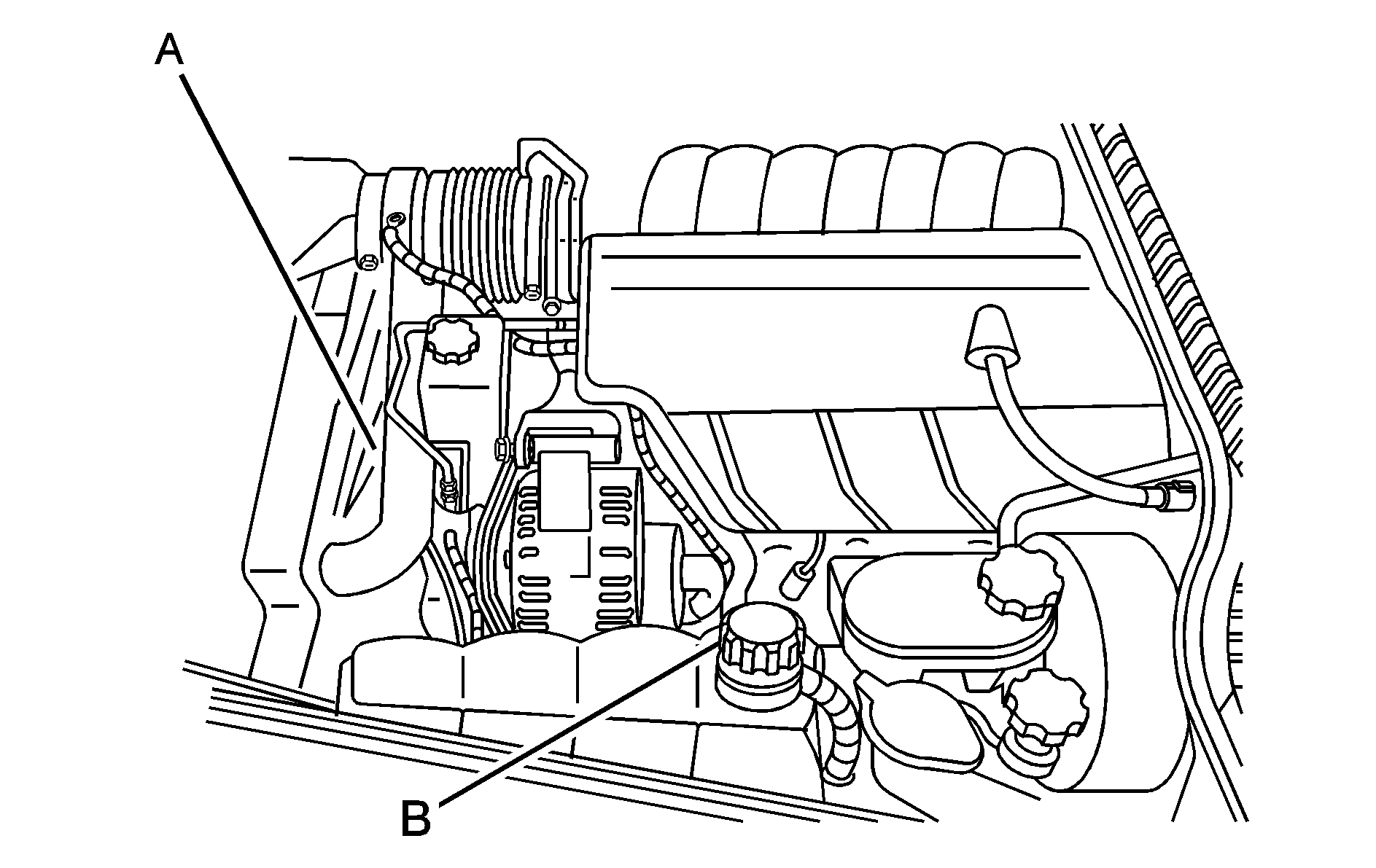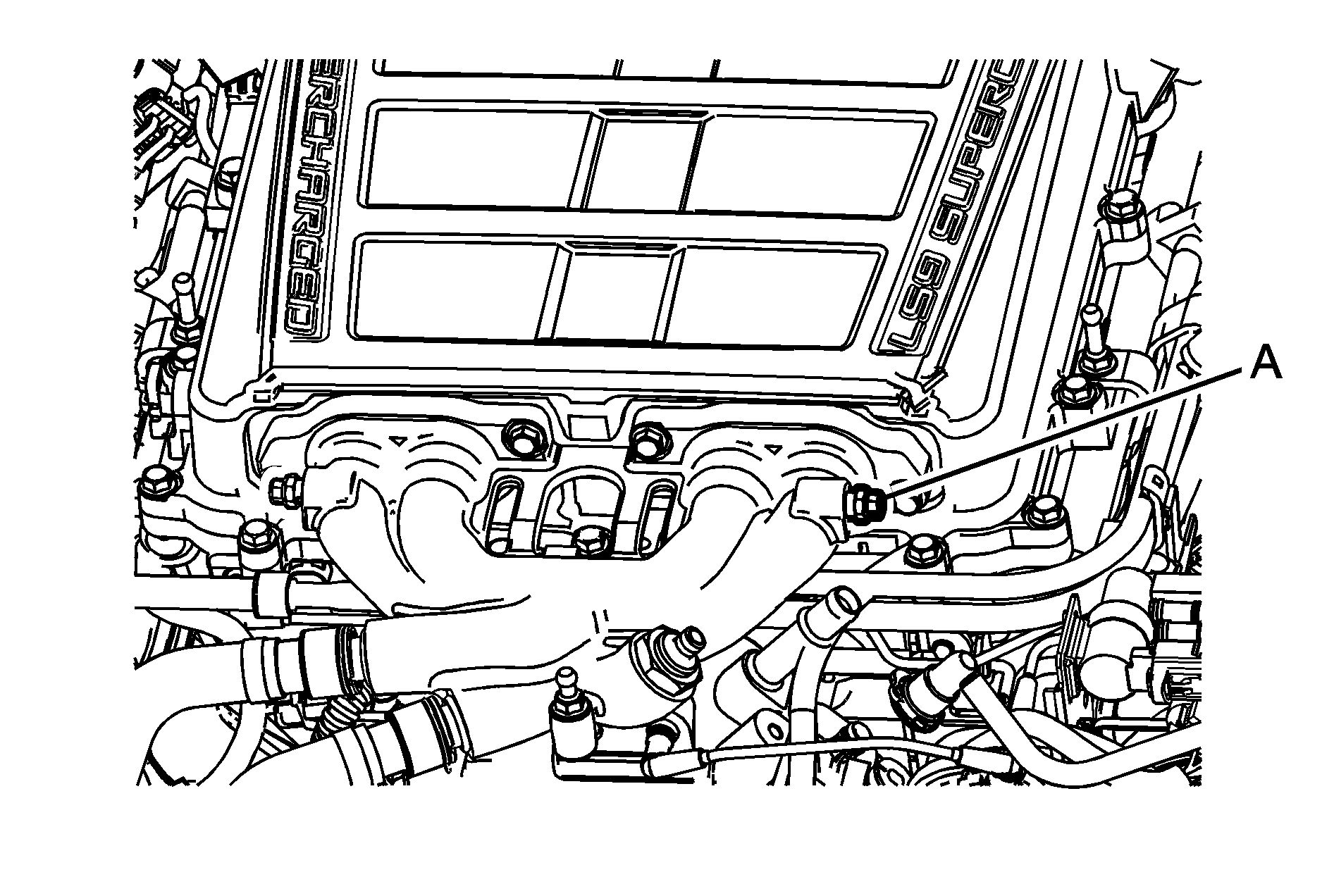Cooling System Engine
The cooling system allows the engine to maintain the correct working temperature.
7.0L Engine shown, 6.2L Engine similar

Electric Engine Cooling Fan
Coolant Surge Tank with Pressure Cap
Caution: An electric engine cooling fan under the hood can start up even when the engine is not running and can cause injury. Keep hands, clothing, and tools away from any underhood electric fan.
Caution: Heater and radiator hoses, and other engine parts, can be very hot. Do not touch them. If you do, you can be burned.
Do not run the engine if there is a leak. If you run the engine, it could lose all coolant. That could cause an engine fire, and you could be burned. Get any leak fixed before you drive the vehicle.Notice: Using coolant other than DEX-COOL® can cause premature engine, heater core, or radiator corrosion. In addition, the engine coolant could require changing sooner, at 30,000 miles (50 000 km) or 24 months, whichever occurs first. Any repairs would not be covered by the vehicle warranty. Always use DEX-COOL® (silicate-free) coolant in the vehicle.
Cooling System Intercooler
The 6.2L LS9 supercharged V8 engine has an intercooler cooling system. See Engine Compartment Overview for location of the intercooler.
The intercooler cooling system has a special procedure for draining and adding coolant. Because this procedure is difficult, see your dealer/retailer for service if the intercooler is low on coolant. The procedure can also be found in the service manual. To purchase a service manual, see Service Publications Ordering Information.
Checking Coolant

- Verify that the engine and intercooler are no longer hot.
- Place a cloth to absorb possible coolant loss under the driver's side bleeder valve (A).
- Loosen, but do not completely unscrew the bleeder valve to check for coolant in the system.
- Tighten the bleeder valve if there is coolant flowing out of the bleeder valve.
- If there is no coolant flowing out of the bleeder valve, there could be a leak in the system. Tighten the bleeder valve and contact your dealer/retailer for service.
